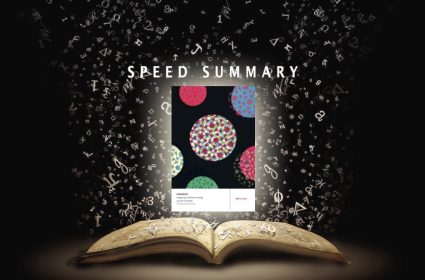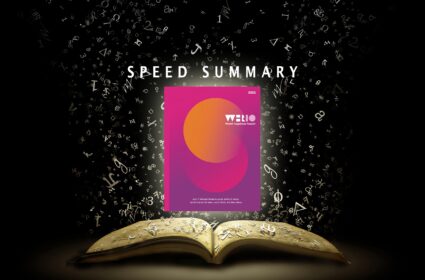Blink Speed Summary: The Power of Thinking Without Thinking

 Blink: The Power of Thinking Without Thinking
Blink: The Power of Thinking Without Thinking- Author: Malcolm Gladwell
- Publisher: Brown
- Publication date: Jan 11, 2005
Suffering from marketing information overload? Too many marketing reports, metrics and plans, too much market intelligence, research and survey data? Well here’s the cure. You need to “thin-slice”. Thin-slicing is a neat cognitive trick that involves taking a narrow slice of data, just what you can capture in the blink of an eye, and letting your intuition do the work for you. This is the prescription of Blink, the popular psychology bestseller from Malcolm Gladwell, staff writer for The New Yorker and author of the cult business book The Tipping Point.
Blink introduces us to the power of thin-slicing by way of example. Take the “Love Lab” at the University of Washington, where psychologist John Gottman has been thin-slicing the way couples interact since the early 1980s. In no more than 15 minutes of observation, Gottman can predict with 90 per cent accuracy whether a couple will be together in 15 years. Or consider how an art expert thin-sliced a 2500 year-old Greek statue in the blink of an eye and was able to tell it was a fake. Or consult the retired soldier whose thin-slicing intuition can outwit the supercomputers of the US Armed Forces.
The great thing about thin-slicing, argues Gladwell, is that we can all do it, especially when it comes to thin-slicing each other. Evolution has honed our social intelligence, allowing us read people accurately based on fleeting first impressions – which is why speed dating and chatroulette might actually be a good idea. We don’t even need to meet our potential future partners in the flesh: just a quick webcam peek of their bedrooms is enough to accurately guess their key personality traits.
But how can marketers harness the power of thin-slicing to cut through data smog and make smarter decisions? To answer this we need to understand how thin-slicing works: Blink draws on cognitive psychology to explain how our powers of thin-slicing intuition have nothing to do with the supernatural, and everything to do with our naturally evolved adaptive unconsciousness. Our conscious mind is the tip of the cognitive iceberg, and what we feel as intuition is really the result of unconscious rapid cognition, fast and frugal information processing that goes on subliminally. Thin-slicing harnesses this powerful adaptive unconsciousness, allowing us to make smart decisions based on minimal information and minimal deliberation.
So the obvious implication of thin-slicing is that you should trust your gut reaction when faced with a mountain of data. Just thin-slice it. For experienced marketers with a proven track-record, this may indeed be the smart option. However, Gladwell warns us that experience and expertise are preconditions to effective thin-slicing; untrained intuition leads to bad decisions based on prejudice, bias and stereotypes. Which is why it often makes sense to seek advice from category and industry experts to inform task at hand. In the blink of an eye, a single expert can usually tell you more than a mountain of survey data. An expert’s thin-slicing can be your marketing smarts.
And there’s another way thin-slicing can potentially inform marketing decisions – and that’s to use it to better understand consumers. There’s a freely-available thin-slicing research tool at Harvard called the IAT (implicit association test) that measures consumer attitudes and feedback by getting them to thin-slice word and image combinations (overview below). Rather than ask for explicit feedback as you would in a survey (subject to a whole host of research biases such as self-censure and social-desirability biases), the IAT measures feedback implicitly and directly through the time it takes for consumers to complete thin-slicing tasks (researcher resources). Neuro-marketing notwithstanding, the thin-slicing IAT is the closest you’ll get to plugging yourself directly into the mind of the consumer. Head over to the Project Implicit site, and take a test to find out just how – behind the veil of political correctness – racist, sexist or ageist you really are – and then talk to your research agency about using the IAT for concept testing and attitude measurement.
The joy of Blink for marketers is not the two key takeouts that listening to experts instead of survey data and/or untrained intuition is a good idea, or that listening to the unedited intuitive responses of consumers can be insightful, but in the intellectual adventure Gladwell takes us on to get there. Doing what he does best, Gladwell accompanies us on an exhilarating roller-coaster ride through the latest highlights of cognitive psychology, making the science of mind exciting and relevant to all those who have one.
Gladwell discussing the IAT with Oprah
Short backgrounder on the IAT




